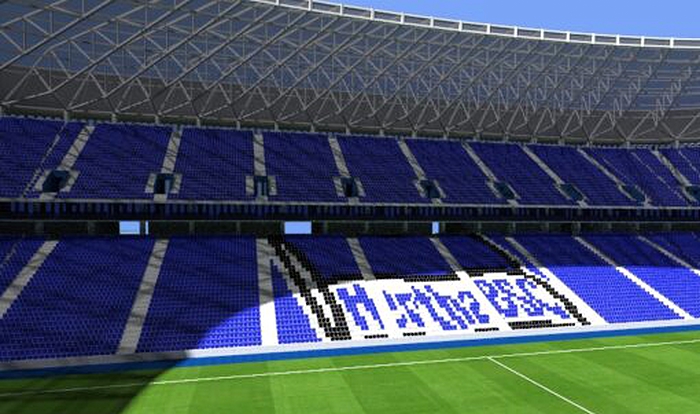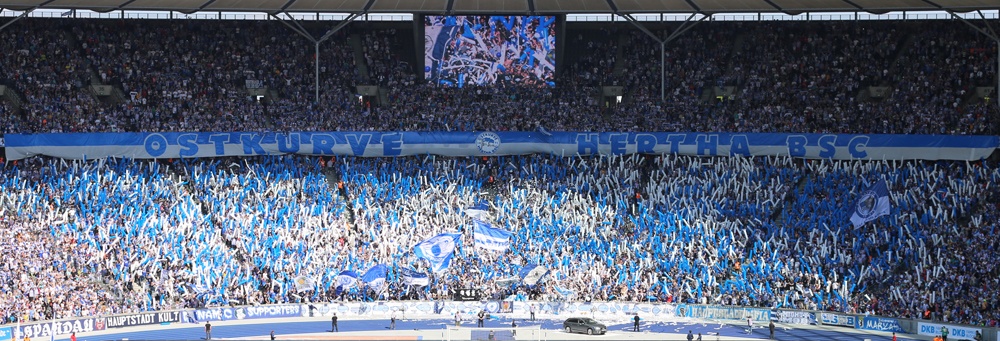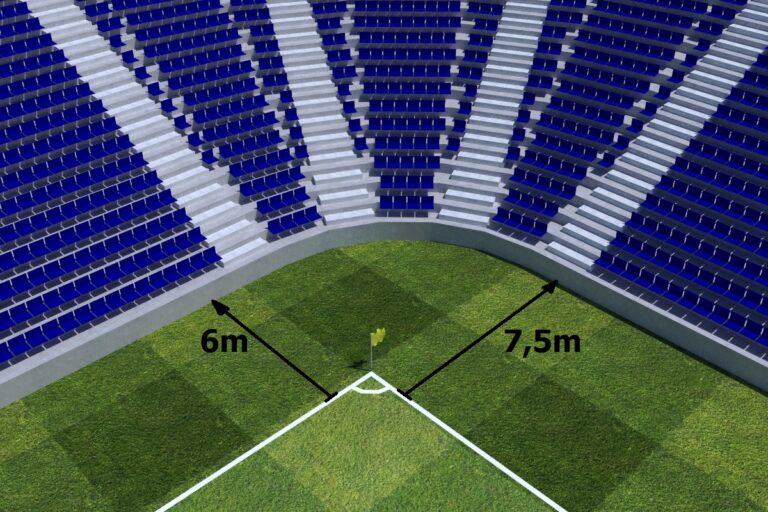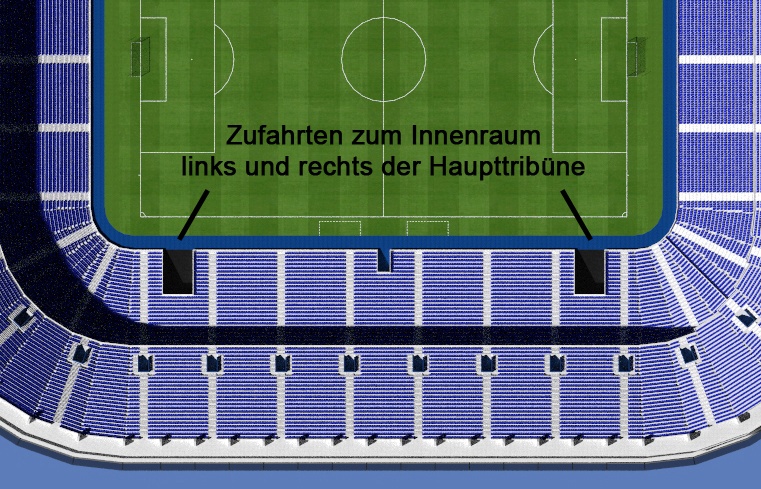Berlin: Hertha fans' wish list for new stadium
source: StadiumDB.com [TS]; author: Tomasz Sobura
 Hertha BSC supporters have been waiting for the new stadium for years. Playing at Olympiastadion is not a good option for the club that would like to move to a typical football venue. The concept of building a 55,000-seater in the Olympic Park, right next to the current Berliners' stadium, is being considered. Other locations are taken into account, but it was the Olympic Park that won the greatest favour of the club's fans.
Hertha BSC supporters have been waiting for the new stadium for years. Playing at Olympiastadion is not a good option for the club that would like to move to a typical football venue. The concept of building a 55,000-seater in the Olympic Park, right next to the current Berliners' stadium, is being considered. Other locations are taken into account, but it was the Olympic Park that won the greatest favour of the club's fans.
Advertisement
Stalemate over new Hertha stadium continues
In the spring of 2017, the club's management announced that it wanted to build its own football stadium. The opening date of the new facility is July 25, 2025, which is exactly Hertha's 133rd birthday. The entire investment would be financed from private funds. Olympiastadion, where Hertha currently play its games, is definitely too big for the club. The optimal capacity of the facility for Berliners is 50,000 - 55,000 seats. Such capacity parameters, as well as the liquidation of the running track, should improve the reception of matches.
The club's authorities are aware that the opening of the new stadium, announced for the summer of 2025, is practically unrealistic. Hertha BSC insists on locating the facility in the Olympic Park, or more precisely in its part called Maifeld. Berlin authorities propose an alternative location (Festplatz around Tegel airport), which the Hertha authorities reject.
The management of Hertha cites the poor communication between Tegel area and Berlin as the reason for the rejection. The city senate, however, rejects the location proposed by Hertha. As if that was not enough, the housing cooperative operating in the Olympic Park does not want to hear about the plans to build the stadium. Moreover, they want to build two more residential buildings in the aforementioned Maifeld and deny Hertha's attempts to buy land for the construction of the stadium. Club president Werner Gegenbauer announced at the general meeting in October that the construction of the stadium in the next two years had to be clearly defined. This will be the main goal of his next term in office.
Hertha fans do not lose their hope for a positive course of events. They decided to create their own catalogue of requirements for the new stadium. Nearly 30 fan groups operating at the Olympiastadion were involved in the work on the document. The discussion on the catalogue took place on internet forums, social media, and also during direct meetings. The participation of such a large number of fans in the development of the requirements for the appearance of the future stadium is an important voice in the discussion, which must be taken into account by those who will decide on the construction of a new home for Hertha.
Exterior and name of new stadium
As already mentioned, the Olympic Park, located in the vicinity of the current Hertha facility, was selected as the location for the new stadium. It is important for the fans that the club plays its games within Berlin's administrative boundaries, because in its long history, Hertha was never forced to move outside the city.
The shape of the stadium must be integrated into the local architecture. The facade of the facility should have natural associations with Hertha, thanks to the colours and symbols of the club. Any elements referring to a possible sponsor of the facility must follow the colours of the club.
Groups of supporters are in favour of leaving the word "stadion" in the name of the venue. They are clearly opposed to renaming the venue as an arena, park or campus, as has happened in several cities in Germany. Negative examples of such practices are Opel Arena in Mainz, Signal Iduna Park in Dortmund and Merkur Spiel-Arena in Düsseldorf.
Fans do not mind taking over the name of the stadium by the title sponsor as they realize that it will bring tangible financial benefits to the club. However, they want the name of the sponsor to function with the alternative name of the stadium. An example is Max-Morlock-Stadion in Nuremberg (the name commemorates the club's legend), which also functions as the Frankenstadion.
Stadium interior
The main idea is to reduce the distance between the stands and the pitch. The DFL specifies the minimum distance between the front rows of stands and the sideline as 6 meters and 7.5 meters as the minimum distance between the goal line and the stands. Such a solution for the location of the stands would be optimal from the point of view of Berlin fans. In addition, they believe that it is necessary to give up all kinds of fences, plexiglass and protective nets between the stands and the pitch. This is to ensure good visibility of the field and improve the interaction between fans and players.
The DFL rules provide for at least one vehicle access to the interior of the stadium, two of which must be able to run simultaneously in opposite directions. This can be achieved by using two small access points instead of one large one. Hertha fans would not like the entrance to be in the Ostkurve area or the visitors sector. In their opinion, both entry points should be located in the main stand or opposite it.
As at the Olympiastadion, there should be no unnecessary gaps between the upper and lower tiers of the stands. When you consider acoustical features of the stadium, the two levels of the stands must not overlap. It should be possible for both home and away supporters to be able to move freely throughout the stadium. If it is impossible to completely abandon the separation of spectators, away supporters should not be placed in completely fenced sectors, the so-called cages.
Other important postulates of fans
The roof of the stadium should not be completely retractable, as it creates the impression of being in a hall, not in the stadium. Hertha fans are also against placing a large video cube that would hang centrally over the turf. Instead, video screens should be attached to the roof, as it is in Munich.
To create a lively atmosphere in the stadium, the roof structure should reflect the sound towards the pitch. It is important to use appropriate materials that will not absorb sound. The stadium must meet the noise protection requirements, and the sound cannot escape through the openings between the upper end of the stands and the roof.
The club's blue and white colours must dominate the stadium. Gloomy gray tones for concrete walls and sectors should be avoided. Advertising boards must match the colours of Hertha BSC. The names of the blocks and stands in the stadium should refer to club legends as well as to the city of Berlin.
The family sector should be in the vicinity of Ostkurve. Thanks to this, the youngest fans will be able to experience the lively atmosphere of the most die-hard stadium tribune. This could encourage hundreds of young fans and their parents to visit the stadium frequently.
It is advisable to mount places for wheelchairs at the top of the lower ring of the stands, as it was at the Olympiastadion. There are no obstacles in the field's visibility, and the distance to the toilets is not very long.
Appearance of Ostkurve - die-hard fans tribune
Hertha's supporters sitting on the Ostkurve suggest that a special backyard should be created in front of the gates of the stadium, from the side of the entrance to the aforementioned stand. It would serve as a meeting place for the club's fans before and after the match.
Inside the stadium, in front of Ostkurve, Hertha fans do not want advertising bands. They can only accept advertising sheets that are placed on the pitch behind the goal line. There is no approval for advertising between the upper and lower Ostkurve rings. The balustrade of the upper ring on the stand is to be reserved for club flags.
Fans would also like the VIP zones and business lounges to be located on the main grandstand. At the same time, they refuse to completely cover the interior of the stadium with VIP zones, as it is at the stadium in Frankfurt. They also rule out the area of Ostkurve as a warm-up place for the substitute players and a photojournalist work zone. They believe that the best location for them is along the sideline.
Author: Tomasz Sobura
Advertisement

 StadiumDB
StadiumDB ©
©  ©
©  ©
©  ©
©